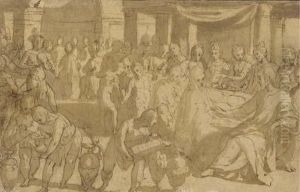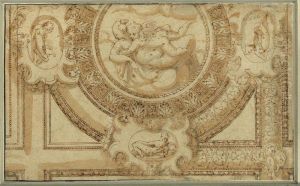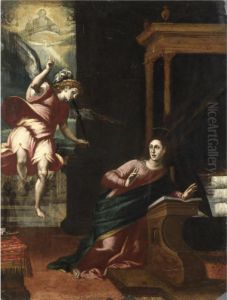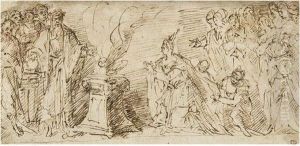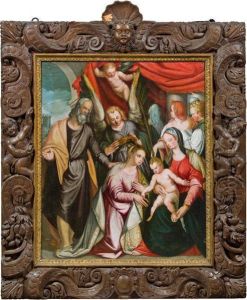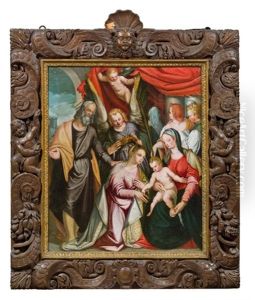Bernardino India Paintings
Bernardino India was an Italian painter of the Renaissance period, born in 1528 in Verona, then part of the Venetian Republic. He is known for his work that reflects the influence of both the Mannerist style and the Venetian School. Though not as widely recognized as some of his contemporaries, India made significant contributions to the artistic movements of his time, particularly in Verona and Vicenza.
India's artistic education began under the tutelage of Giovanni Francesco Caroto, a prominent Veronese painter. This early training laid the foundation for India's development as an artist. His work was further influenced by the Mannerist style, which was characterized by artificiality, grace, and elegance, departing from the proportional and naturalistic principles of the High Renaissance. This influence is evident in the elongated figures and often complex compositions seen in India's paintings.
Throughout his career, Bernardino India was active in Verona, but he also worked in other cities, such as Mantua and Vicenza. His works included both religious and secular themes, with many commissions coming from local churches, confraternities, and private patrons. India's paintings often featured frescoes and altarpieces, demonstrating his mastery of different painting techniques and his ability to work on a grand scale.
Despite his accomplishments, Bernardino India's reputation was somewhat overshadowed by the more dominant figures of the time, such as Paolo Veronese and Jacopo Tintoretto. However, his work has been appreciated for its own merits, and he is considered an integral part of the artistic scene of the Veneto region during the 16th century.
Bernardino India died in 1590 in Verona. Although he may not have achieved the same level of fame as some of his peers, his contributions to the Italian Renaissance and the cultural heritage of his native city have been recognized by art historians. His works continue to be studied and admired for their beauty and historical significance.
